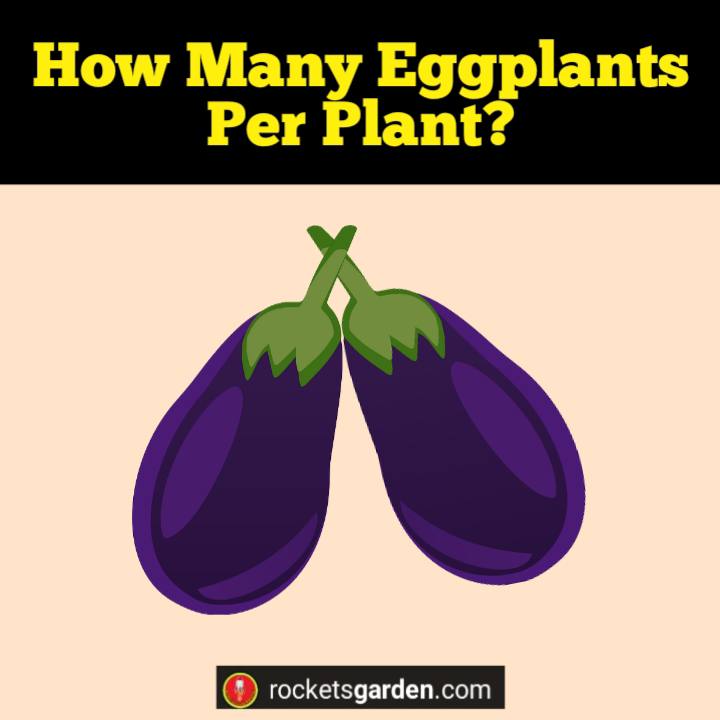
Eggplants are a popular vegetable known for their unique flavor, texture, and versatility in various cuisines. Whether you are a small-scale gardener or a commercial farmer, achieving a high yield of eggplants is essential to meet the demands of the market or your household.
How Many Eggplants Per Plant?
The number of eggplants per plant varies depending on different factors. The type of eggplant, growing conditions, and care practices all play a significant role in determining the yield.
On average, a healthy eggplant plant can produce between four and eight eggplants per plant. However, some varieties are known to produce as many as 20 eggplants per plant.
It is crucial to provide the necessary nutrients, water, and care to ensure a high yield of eggplants per plant.
Eggplant Yield Per Plant In Kg
A healthy eggplant plant can produce between 2-4 kg of fruit per season. However, some varieties are known to produce as much as 6 kg of fruit per plant.
To achieve a high yield per plant, it is essential to provide the necessary nutrients, water, and care.
Eggplant Yield Per Hectare
On average, an eggplant crop can yield between 20-25 tons per hectare. However, yields can vary depending on the growing conditions, pest and disease pressure, and the quality of management practices.
To achieve a high yield per hectare, it is essential to plant the appropriate number of plants per hectare, providing adequate spacing between plants to ensure optimal growth and development.
How To Increase Eggplant Yield Per Plant?
If you are an avid gardener looking to increase your eggplant yield per plant, there are several strategies you can try. One of the most important things you can do is to ensure that your eggplants have access to plenty of sunlight.
These plants thrive in full sun, so make sure they are located in an area of your garden that receives at least six hours of direct sunlight each day. If your garden is shaded, consider growing your eggplants in containers that can be moved to a sunnier spot.
Another key factor in boosting eggplant yield is ensuring that your plants have sufficient nutrients. Eggplants require a lot of potassium, phosphorus, and nitrogen to grow, so make sure your soil is rich in these elements.
You can achieve this by incorporating compost or other organic matter into your soil, or by using a high-quality fertilizer that is specifically formulated for eggplants. Be careful not to over-fertilize your plants, however, as this can lead to excessive foliage growth at the expense of fruit production.
Pruning is also an effective way to increase eggplant yield per plant. By removing excess foliage and side shoots, you can direct the plant’s energy toward fruit production.
Be sure to prune your eggplants regularly, but avoid removing too many leaves at once, as this can stress the plant and reduce its overall yield.
Finally, be sure to keep your eggplants well-watered throughout the growing season, as drought stress can cause a significant reduction in yield. Aim to keep the soil evenly moist, but avoid overwatering, as this can lead to root rot and other fungal diseases.
How Much Space Should I Give Each Eggplant Plant To Maximize Yield?
To maximize eggplant yield per plant, each plant should have enough space to grow and develop. Ideally, eggplant plants should be spaced 18-24 inches apart in rows that are 30-36 inches apart. This spacing allows the plants to receive adequate sunlight, air circulation, and nutrients.
When plants are crowded, they compete for resources, leading to reduced yield and increased disease and pest problems. Providing enough space between plants also makes it easier to access the plants for pruning and harvesting.
How Often Can I Harvest Eggplants From A Single Plant?
The frequency of harvesting eggplants from a single plant depends on several factors, such as the variety, growing conditions, and care practices. Generally, eggplants are ready to be harvested 60-80 days after planting.
Once the fruit reaches maturity, it can be harvested every few days, depending on the number of fruits produced. Eggplant plants can produce fruit continuously throughout the growing season, typically lasting from mid-summer to early fall.
Harvesting regularly also encourages the plant to produce more fruit, leading to higher eggplant yield per plant.
How Do I Know When It’s Time To Harvest My Eggplants?
Knowing when to harvest eggplants is essential to ensure optimal flavor and quality. The ideal time to harvest eggplants is when they are firm and shiny, with a deep color and smooth skin.
When the skin starts to dull and wrinkle, the eggplant is overripe and has a bitter taste. To harvest, cut the eggplant stem with a sharp knife or pruners, leaving a short stem attached.
Leaving too long of a stem can lead to rotting or damage to the fruit. Harvesting regularly when the eggplants are at their peak also encourages the plant to produce more fruit, leading to higher eggplant yield per plant.
